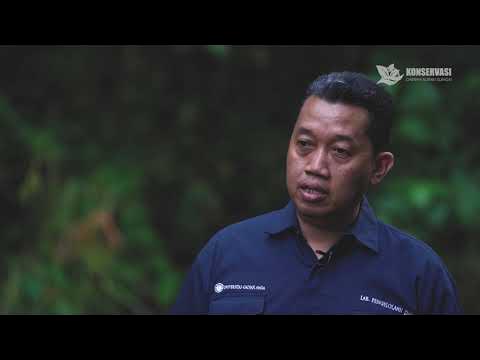SZELÍDVÍZORSZÁG - TELJES FILM
Summary
TLDRThis video explores the transformation of the Tisza River and its surrounding areas, delving into the historical and ecological changes caused by river regulation and land use policies. It highlights the consequences of modern agricultural practices, water management challenges, and environmental degradation. The script contrasts the traditional floodplain management with current issues like droughts and floods, while advocating for a more sustainable, nature-based approach. The video urges reconsideration of water management and agricultural strategies to prevent further ecological and social deterioration in the Tisza region.
Takeaways
- 🌊 The Tisza River and its floodplain played a crucial role in the livelihoods of local communities, who relied on the natural flooding cycle to maintain fertile land for agriculture.
- 🏞️ The natural floodplains helped store excess water in forests, soil, and vegetation, which supported livestock and agriculture during droughts.
- 💡 The transition from floodplain-based farming to large-scale monoculture began after the Turkish wars, further accelerated by the Habsburgs, leading to deforestation and the conversion of floodplains into farmland.
- 🚧 The 18th-century regulations under Maria Theresa restricted traditional farming and emphasized large-scale grain production, limiting the use of floodplains for sustainable agriculture.
- ⚠️ The 19th-century regulation of the Tisza River, initiated by István Széchenyi, aimed to control flooding but had unintended consequences, like reduced water retention and increased drought conditions in the region.
- 🌱 The replacement of forests with farmlands has made the landscape more vulnerable to extreme weather events, such as droughts and floods, as soil and vegetation can no longer retain water effectively.
- 🏜️ The regulation of rivers and the removal of floodplains has led to a semi-desert landscape in areas that were once rich in biodiversity, contributing to the region's current environmental and agricultural challenges.
- 🚜 The focus on large-scale, industrialized farming practices has been financially costly and unsustainable, as water shortages and irrigation issues persist.
- 🌍 Researchers have identified natural floodplain areas where controlled flooding could reduce flood risks and restore ecosystems, offering a more sustainable approach to land use.
- 🔄 There is an urgent need to shift toward sustainable, nature-friendly agricultural practices that restore natural water retention systems and reduce vulnerability to both floods and droughts.
Q & A
What is the significance of the Tisza River in Hungarian history and agriculture?
-The Tisza River has played a crucial role in Hungarian agriculture, especially in the Great Hungarian Plain. Historically, it was known for its rich biodiversity, supporting both farming and fishing. Its floodplains were vital for flood management and natural irrigation.
How did historical flood management practices differ from current methods?
-Historically, flood management in the Tisza region involved natural systems like forests, wetlands, and traditional floodplain agriculture. Current methods, however, involve controlling the river with levees and draining excess water quickly, which has led to environmental degradation.
What challenges does the Great Hungarian Plain face today in terms of water management?
-Today, the Great Hungarian Plain faces challenges from both flooding and droughts. The current water management system, which focuses on rapid water drainage, fails to address droughts, leading to a water imbalance that affects agriculture and biodiversity.
What were the consequences of regulating the Tisza River in the 19th century?
-The regulation of the Tisza River, initiated in 1846, involved straightening the river and reducing its length by a third. While it reduced flooding in certain areas, it also led to environmental issues like the loss of wetlands, biodiversity, and increased water shortages.
How did traditional floodplain agriculture work in the Tisza region?
-Traditional floodplain agriculture in the Tisza region involved managing seasonal floods naturally. People relied on forests, pastures, and wetlands to retain excess water, which was later used for irrigation and livestock. This method supported biodiversity and helped manage water sustainably.
What impact did the Habsburg era have on the Tisza floodplains?
-During the Habsburg era, the floodplains were increasingly converted into farmland to support large-scale grain production. This shift, especially after Maria Theresa’s 1767 land reforms, reduced the area available for traditional floodplain agriculture, leading to environmental changes.
What are the long-term effects of deforestation in the Tisza region?
-Deforestation in the Tisza region has reduced the land’s ability to absorb and retain water, contributing to both flooding and droughts. Without forests, rainfall evaporates more quickly, and the land is less able to cool down, which disrupts local ecosystems and agriculture.
Why is there a growing concern about water shortages in Hungary’s eastern regions?
-Hungary's eastern regions, particularly the southern part of the Great Hungarian Plain, receive insufficient rainfall and rely on rivers like the Tisza for water. However, current water management practices fail to address the needs of these arid areas, leading to concerns about long-term water shortages.
What role did the Ottoman Wars play in changing the Tisza floodplain management?
-During the Ottoman Wars, traditional floodplain management began to collapse as war disrupted the maintenance of water control systems. The need for fortifications and the destruction of forests for military purposes also contributed to the breakdown of traditional agricultural systems in the region.
What solutions are being proposed to address the water management issues in the Tisza region?
-Proposed solutions include revitalizing traditional floodplain management systems, reintroducing natural water retention areas, and implementing small-scale water storage projects. Researchers from the Budapest University of Technology have identified 19 potential floodplains that could help manage excess water more sustainably.
Outlines

このセクションは有料ユーザー限定です。 アクセスするには、アップグレードをお願いします。
今すぐアップグレードMindmap

このセクションは有料ユーザー限定です。 アクセスするには、アップグレードをお願いします。
今すぐアップグレードKeywords

このセクションは有料ユーザー限定です。 アクセスするには、アップグレードをお願いします。
今すぐアップグレードHighlights

このセクションは有料ユーザー限定です。 アクセスするには、アップグレードをお願いします。
今すぐアップグレードTranscripts

このセクションは有料ユーザー限定です。 アクセスするには、アップグレードをお願いします。
今すぐアップグレード5.0 / 5 (0 votes)






